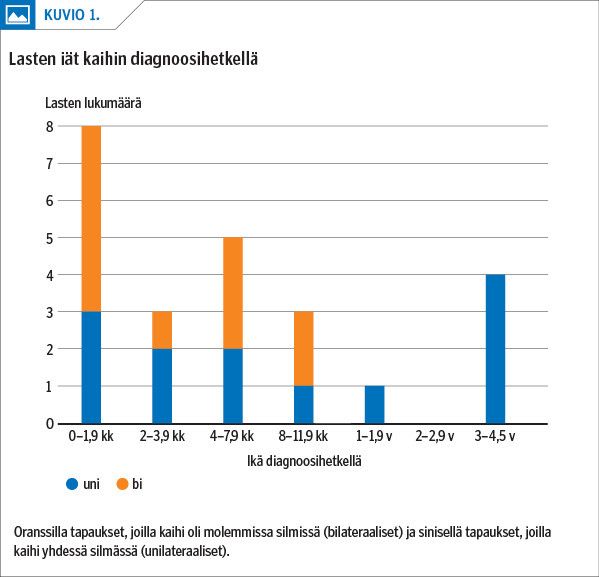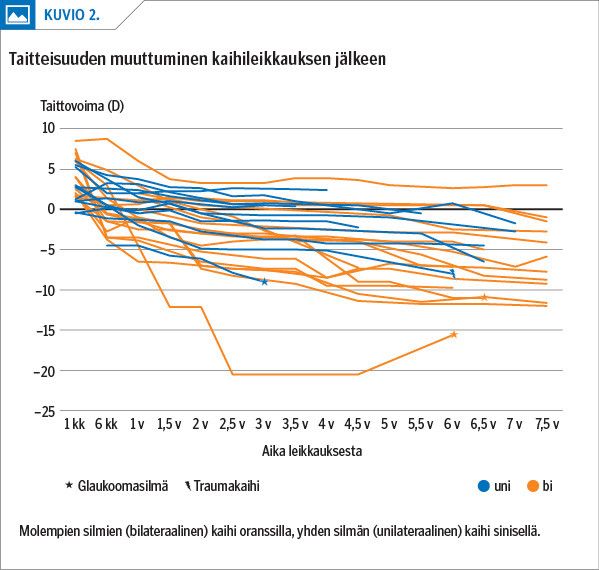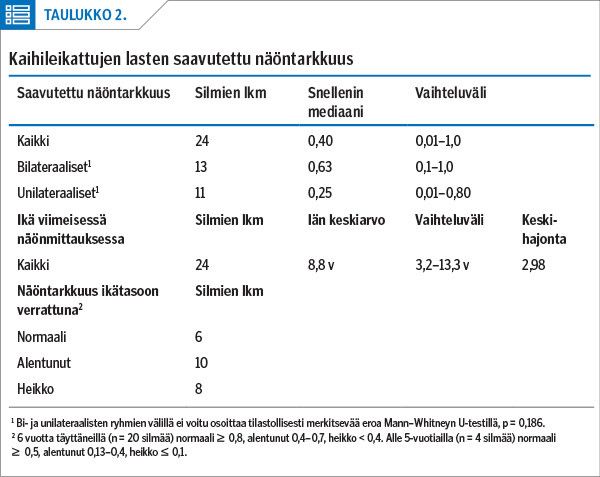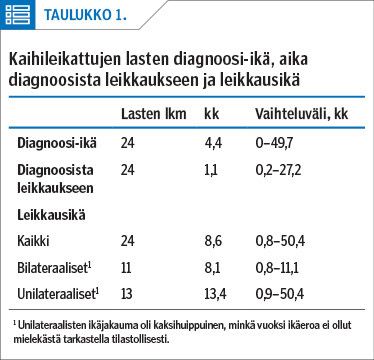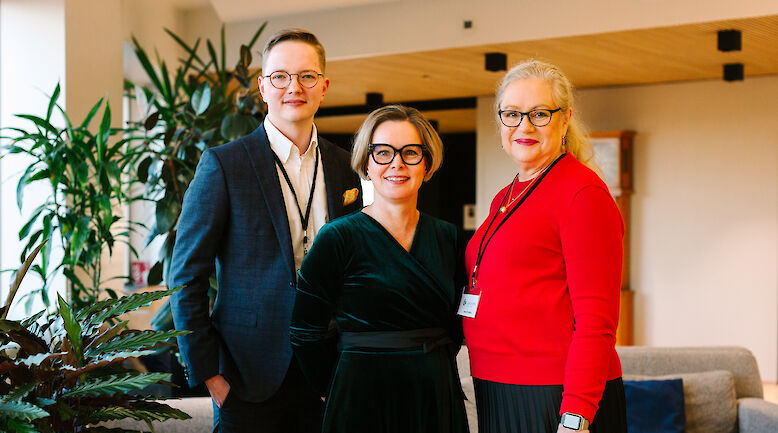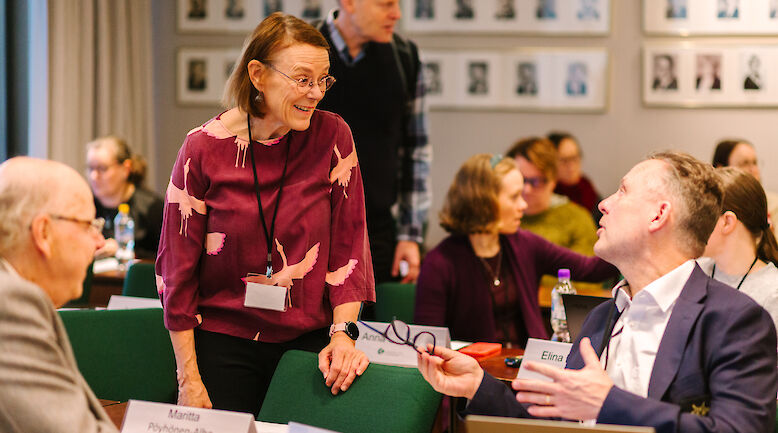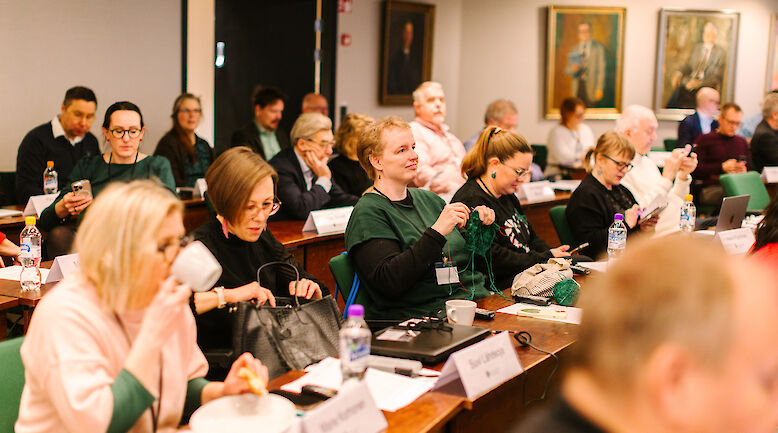Paediatric cataract screening and surgery

Background Paediatric cataract should be operated on early to ensure the child’s visual development. We investigated the outcomes of paediatric cataract operations performed at TYKS between 2003–2016.
Methods Children under five years old at the time of cataract surgery and primary intraocular lens implantation were included in the study.
Results A total of 24 children were operated on: 11 of the patients had cataracts in both eyes and 13 only in one eye. Altogether 83% of the children were referred either from child health clinics or by a paediatrician. The median age at the time of the surgery was 8.6 months (min. 0.8 months, max. 50.4 months). Six patients (10 eyes) were operated on at under 2 months (25% of patients). Glaucoma developed in three patients, all of whom were operated on at the age of 1 month. The latest distance visual acuity median was 0.40: in the bilateral group 0.63, in the unilateral group 0.25. No statistical difference was found between the groups (p = 0.186). 1–18 months after the surgery, refraction changed on average by –2.85 D and between 1.5–5 years by on average –2.80 D.
Conclusions In Finland children are referred early due to regular screening. A myopic shift in refraction can be seen after paediatric cataract surgery. It is fastest during the first years after surgery.
